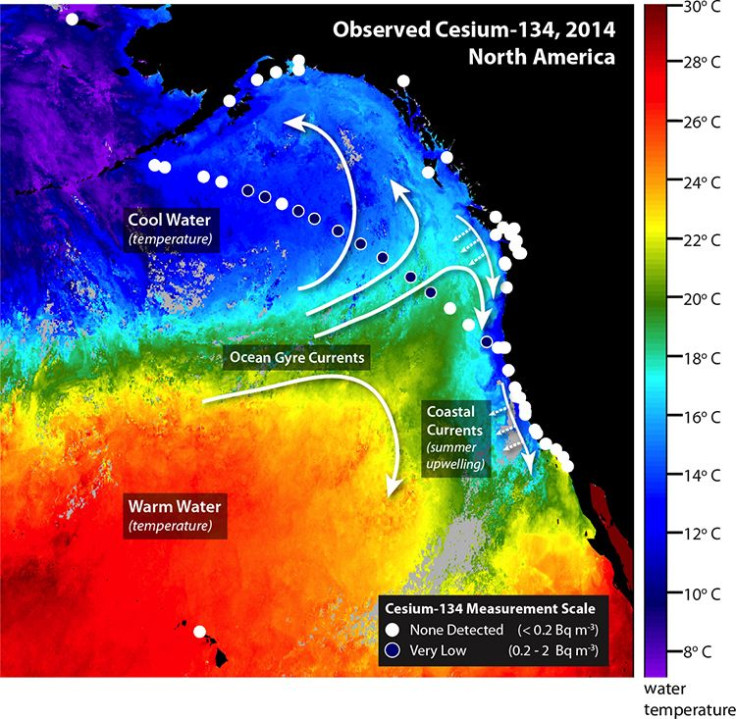Radiation From Fukushima Reaches US West Coast: What Danger Does Cesium-134 Pose?

A plume of radioactive material has been on a steady march across the Pacific Ocean since Japan’s Fukushima nuclear disaster in 2011. And it just arrived on the United States’ doorstep. Traces of radiation from the leak have been detected about 100 miles off the coast of Eureka in northern California, researchers from the Woods Hole Oceanographic Institution, WHOI, in Massachusetts reported Monday.
Water samples collected in August contained “minute” quantities of cesium-134, a contaminant linked to Fukushima and the same stuff found in the waters near Vancouver, British Columbia, in February. Cesium-134 does not occur naturally in the environment. The only source of the isotope in the Pacific Ocean today is from Fukushima, researchers said.
Scientists have long suspected that radiation from the 2011 meltdown, which spewed tens of trillions of becquerels (a unit used to measure radioactivity) of radioactive isotopes into the Pacific, would reach the U.S. It was only a question of when. In May, scientists tested kelp samples from all along the U.S. West Coast for signs of ocean-borne radiation. While the tests came back negative, the findings provided a “baseline” with which future tests could be compared, researchers said.
The prospect of a huge cloud of radioactive material colliding with the U.S. has raised concerns about the dangers of swimming in or consuming seafood from potentially contaminated water. Ken Buesseler, a marine chemist with WHOI, emphasized, however, that the traces discovered so far are “only detectable by sophisticated equipment” and are relatively innocuous.
The amount of cesium-134 reported in these new offshore data is “less than 2 becquerels per cubic meter ... far below where one might expect any measurable risk to human health or marine life,” researchers noted. Swimming in the water six hours a day, every day for a year would expose a person to a thousand times less radiation than a single dental X-ray, Buesseler said. “It will not deter me from swimming in the Pacific,” he mused. As far as seafood contamination, Buesseler noted that cesium, unlike mercury, does not accumulate in the food chain.
The health risks of exposure to radioactive material have long been debated. The planet’s oceans already contain vast amounts of radiation, as the world’s 435 nuclear power plants routinely pump radioactive water into Earth’s oceans, albeit less dangerous isotopes than cesium. “There’s a point to be made that we live in a radioactive world and the ocean just has radioactive isotopes in it,” Buesseler told Bloomberg Businessweek in February. “People have a limited knowledge of radioactivity.”
© Copyright IBTimes 2024. All rights reserved.





















